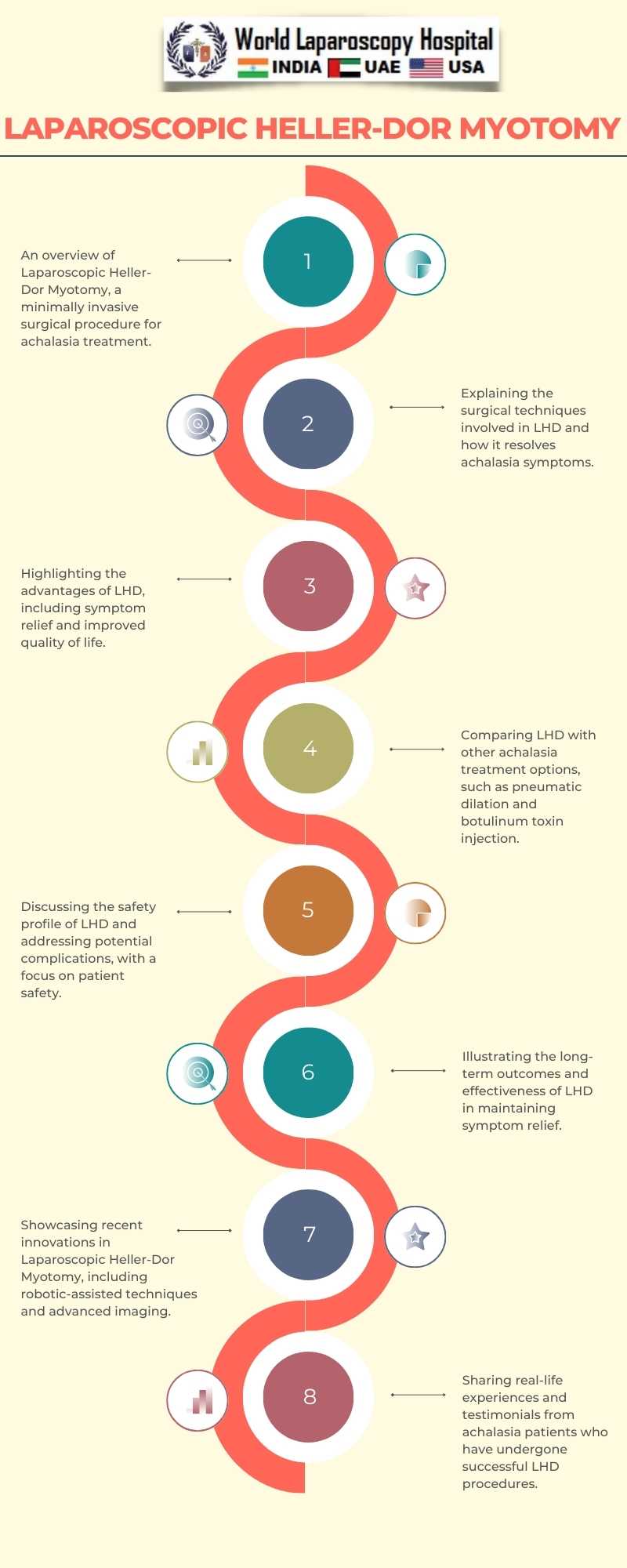Introduction:
Achalasia is a rare esophageal motility disorder characterized by the inability of the lower esophageal sphincter (LES) to relax, leading to difficulty in swallowing, regurgitation, chest pain, and weight loss. Over the years, various treatment options have been explored to provide relief to achalasia patients. Among them, the Laparoscopic Heller-Dor Myotomy (LHD) procedure has emerged as a triumphant solution, offering remarkable outcomes for patients suffering from this challenging condition. In this comprehensive article, we delve into the intricacies of LHD, its historical development, surgical techniques, clinical outcomes, and the impact it has had on the lives of achalasia patients.

I. Historical Perspective
A. Achalasia: A Brief Overview
- Understanding the pathophysiology of achalasia
- The challenges in its diagnosis and treatment
B. Early Surgical Interventions
- Exploration of pre-LHD surgical methods
- Limitations and complications associated with traditional approaches
C. Emergence of Laparoscopic Heller-Dor Myotomy
- Pioneers and innovators in LHD
- The paradigm shift towards minimally invasive surgery
II. Surgical Techniques
A. Preoperative Evaluation
- Patient selection and assessment
- Diagnostic tests and their significance
B. Anesthesia and Positioning
- Anesthesia considerations for LHD
- Patient positioning and trocar placement
C. Laparoscopic Approach
- Step-by-step description of the LHD procedure
- Technical nuances and variations
D. Dor Fundoplication
- Role of fundoplication in preventing reflux
- Comparison of different fundoplication techniques
III. Clinical Outcomes
A. Symptom Relief
- Swallowing improvement post-LHD
- Resolution of regurgitation and chest pain
B. Complication Rates
- Evaluating the safety profile of LHD
- Managing and preventing complications
C. Long-term Follow-up
- Maintaining symptom relief over time
- Potential need for re-intervention
IV. Comparative Analysis
A. LHD vs. Other Treatment Modalities
- Comparing LHD with pneumatic dilation and botulinum toxin injection
- Superiority of LHD in achalasia management
B. Patient Satisfaction
- Patient-reported outcomes and quality of life after LHD
- Testimonials from achalasia patients
V. Advances and Future Directions
A. Robotic-Assisted LHD
- The role of robotics in enhancing LHD precision
- Current research and future possibilities
B. Innovations in Imaging
- The use of advanced imaging techniques for LHD planning
- Potential improvements in patient outcomes
C. Personalized Medicine in Achalasia Management
- Tailoring LHD to individual patient needs
- Precision medicine in the treatment of achalasia
Conclusion:
A. The Triumph of Laparoscopic Heller-Dor Myotomy
- Recapitulating the success story of LHD in achalasia resolution
B. A Brighter Future for Achalasia Patients
- The hope and promise offered by LHD
In conclusion, Laparoscopic Heller-Dor Myotomy has revolutionized the treatment of achalasia, offering a triumph over the challenges posed by this debilitating condition. With its minimally invasive approach, excellent clinical outcomes, and ongoing advancements, LHD provides hope and relief to countless achalasia patients worldwide. As we continue to explore new frontiers in achalasia management, the future looks brighter than ever for those affected by this disorder.